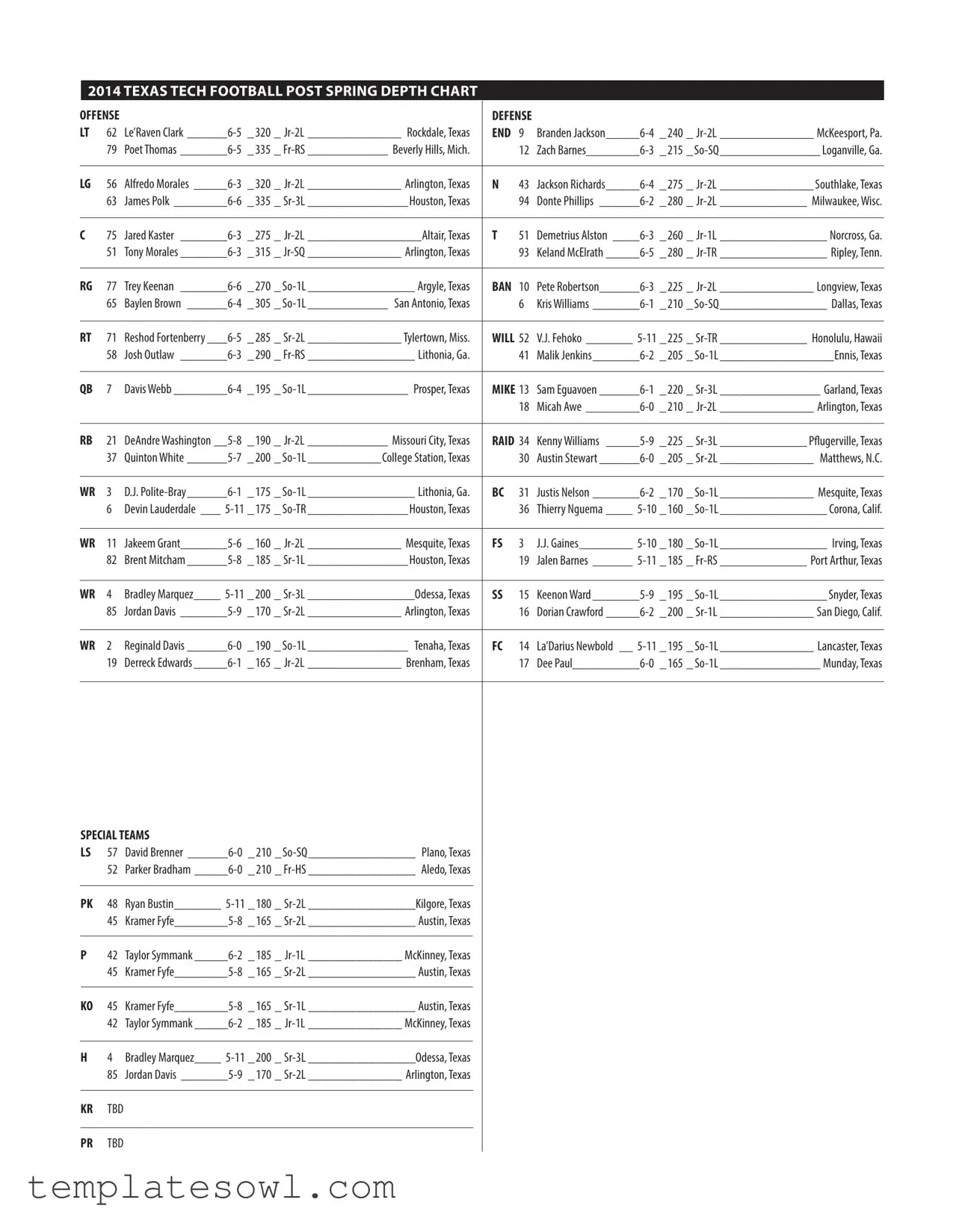What is a football depth chart?
A football depth chart is a visual representation of a team's roster, displaying the players' positions and their ranking within that position. It helps coaches, players, and fans understand the lineup, identify starters, and determine backups. Essentially, it serves as a strategic tool for planning plays and substitutions during games.
Why is the football depth chart important?
The depth chart is crucial for several reasons. It provides insight into player development and readiness. Coaches rely on it to make informed decisions about game strategies and player rotations. Fans can use it to better understand the team's strengths and weaknesses. For players, it can serve as motivation to improve their performance and compete for higher positions.
How does one read the football depth chart?
The depth chart is typically read from left to right and top to bottom. The first player listed at each position is usually the starter, followed by the backups. Positions are grouped by offense and defense. For example, on offense, you might see the quarterback followed by running backs and wide receivers. Each player's status (e.g., junior, sophomore) is also included to give context about their experience level.
What does the player information on the depth chart signify?
The player information includes several key details. Typically, you'll see the player's name, height, weight, class (indicating their year in school), and any relevant notes about their experience or injury status. This data helps in assessing the physical attributes of the player and making decisions about plays and rotations based on their capabilities.
How often is the depth chart updated?
Depth charts are frequently updated, especially during the off-season and leading up to games. Changes can occur due to player injuries, changes in performance, or recruitment of new players. Coaches often revise the depth chart based on practice performance and game results to ensure the most effective lineup is utilized.
Can a player move up or down the depth chart?
Yes, players can move up or down the depth chart based on their performance in practice and games. Consistent performance can lead to a player earning a starting position, while difficulties in practice or performance in games may result in a drop to a backup role. Coaches assess these changes regularly and adjust the depth chart accordingly.
What does it mean if a player is designated as "starter" or "backup" on the depth chart?
A "starter" designation indicates that the player is the first choice for that position and will typically begin the game. Conversely, a "backup" means the player will step in when the starter is injured or needs to rest. Backups play a vital role in maintaining team performance throughout the game.
Are there specific depth charts for offense and defense?
Yes, teams maintain separate depth charts for offense and defense due to the distinct roles each player fulfills. The offensive depth chart outlines positions such as quarterback, running back, and wide receiver. The defensive chart includes players designated for positions like linebacker, cornerback, and safety. Both charts are equally important for overall team strategy.
What happens to the depth chart during the season?
As the season progresses, the depth chart may undergo several changes. Injuries, performance issues, and player development can all impact the chosen lineup. Coaches continuously assess and adjust the depth chart to optimize team performance. It is a dynamic tool that reflects the current state of the team throughout the season.

